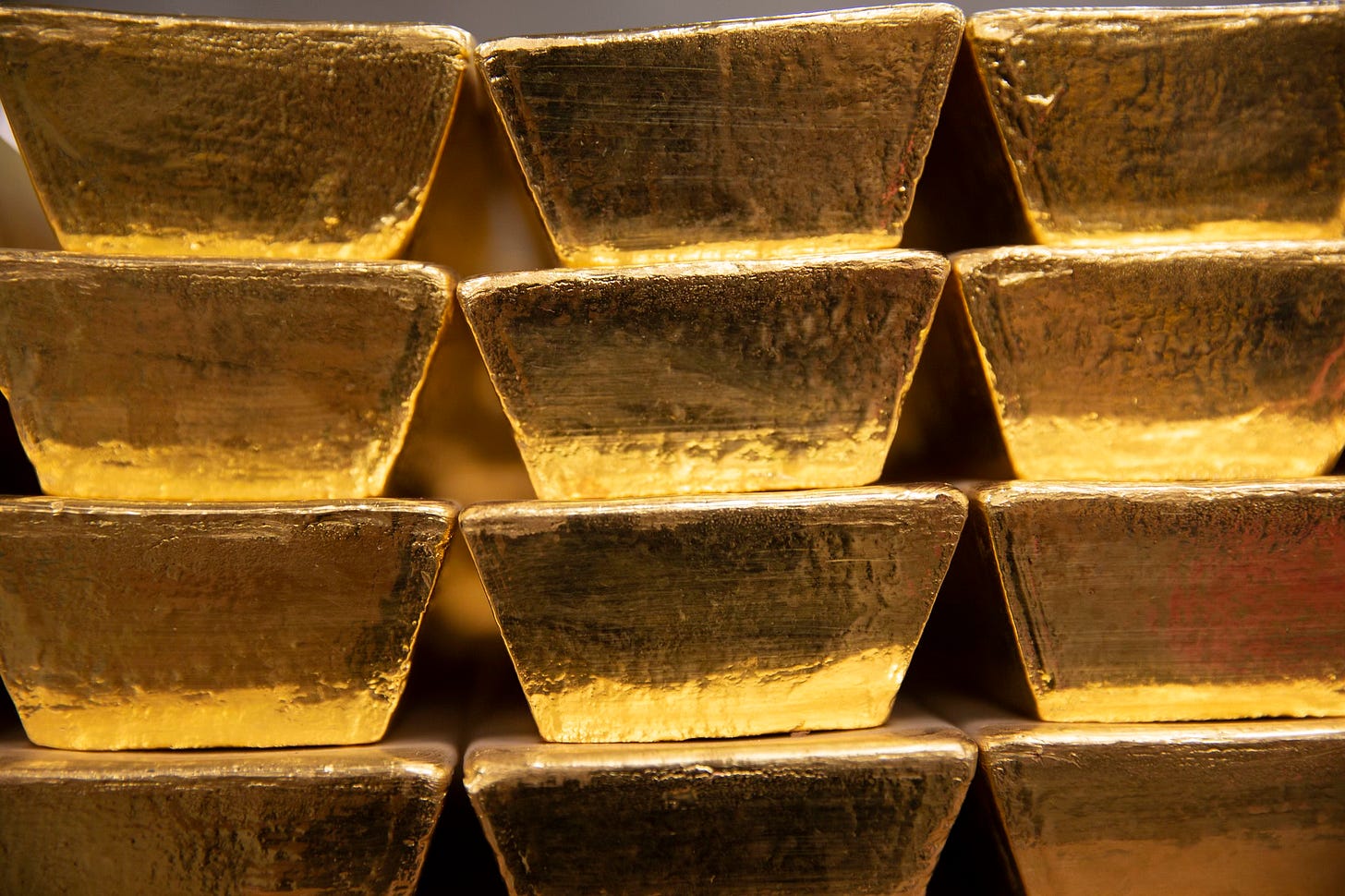The barbarous relic booms
The 21st century has been good for gold, its price having risen ten-fold from the lows seen around the millennium.
Which asset has provided the best return in the last 5, 10 and 20 years: global equities, global government bonds or gold?
The answer is gold. Its price has risen by 80% in the last 5 years, 134% in the last 10 years and a 552% in the last 20 years, outpacing, in each case, the returns from global equities or government bonds.
The twenty-first century has been good for gold, its price having risen ten-fold from the lows seen around the millennium. Gold reached an all-time high of $2943 last month, up 40% in the last year, a stronger performance even than US tech stocks. Gold has since edged lower and closed last Friday at $2851.
This latest wave of enthusiasm started in late 2022 and has occurred in the face of conditions that are normally seen as negative for the gold price. Interest rates are high relative to levels seen for most of the last 15 years, leaving holders of gold missing out on significant interest income. The dollar has been on an upward path, increasing the cost of buying gold for non-US investors and, supposedly, dimming its appeal.
Gold yields no income and incurs costs for safe storage. It has limited practical use. About 10% of gold production is used in industry, mainly in electronics and medical uses. Gold has been a medium of exchange since ancient times but by 1924 the British economist, John Maynard Keynes, famously dubbed it, “a barbarous relic”. Gold no longer underpins the value of the world’s major currencies as it did in Keynes’ day, but it has plenty of fans and always has. JP Morgan, arguably the most important banker of the last century, put it succinctly, “gold is money, everything else is credit”.
Gold has long been seen as offering protection against uncertainty and inflation. It is these factors that seem to offer the most plausible explanation for gold’s recent performance. As one source of uncertainty diminishes another, seems to pop - from the pandemic to conflicts in Ukraine and the Middle East to today’s tectonic shifts in US foreign and trade policy. In particular, gold seems to have been a beneficiary of concerns about tariffs and protectionism. Lingering fears of inflation, coupled with the memory of the inflationary shock of 2022-23, also seem to have played a role. Meanwhile western governments, particularly the US, are continuing to borrow at scale. That conjures up the spectre of governments stoking inflation to whittle away the real value of public debt.
Demand for gold has not just come from private investors. Since 2022, central banks have also raised their holdings of gold, motivated in part, at least, by the desire to diversify holdings away from the US dollar.
Whether Keynes “barbarous relic” will keep rising is anyone’s guess. Uncertainty and inflation risk, after all, were widely seen as also helping explain the vertiginous rise of Bitcoin which, until January, had put even gold’s ascent in the shade.
Yet in the last six, hardly event-free weeks, Bitcoin has lost 20% of its value. Cryptocurrencies are a world of their own. As for gold, it offers a gauge, albeit a flawed one of market anxiety. In an uncertain world, that’s an indicator to watch.
A personal view from Ian Stewart, Deloitte's Chief Economist in the UK. Subscribe and/or view previous editions of the Deloitte Monday Briefing here.


